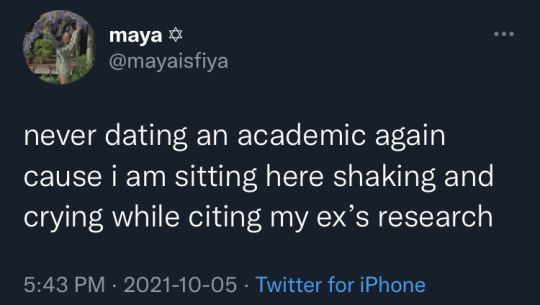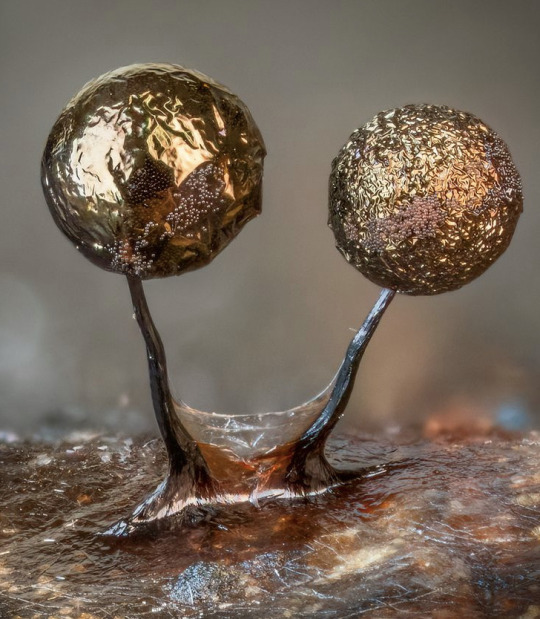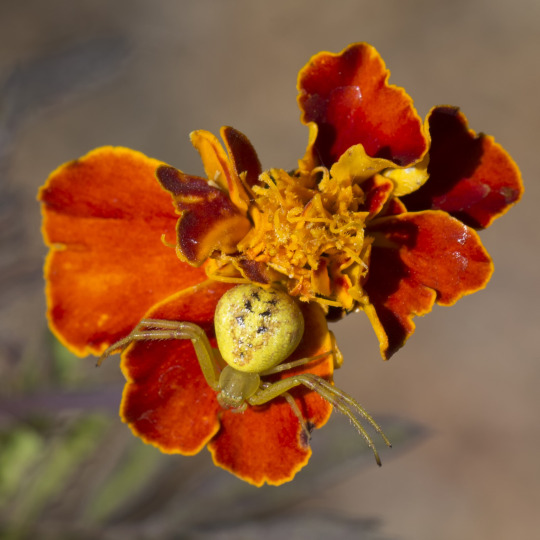Text
Freeze drying is an awesome process, though not without it's drawbacks. It's ridiculously energy intensive at scale, for instance (food needs to be frozen for it, after all). I assume that in the solarpunk utopia, electricity would be near limitless (in account of all the solar and nuclear energy generation), though. So I guess that's probably a non-issue.
I like the idea of a common processing area, where you can take your raw produce and have it get made into new things that can be later distributed at the communal market. Also a communal warehouse for cold storage makes more sense to me than individual cellars for everyone, as the space would quickly add up and solarpunk cities would need to be densely populated to minimize (and centralize) environmental impacts. Smaller communal freezes and frigdes would also be a cool (hehe) solution to cold storage.
As for packaging options, I still don't beleive glass and ceramic by themselves are the best alternative. Theyr'e fine for preserves and liquid foods, but you wouldn't store potato chips in a mason jar, would you? I mean I guess you could, but it probably would be extremely cumbersome. Also imagine having to haul 10 or 20 glass containers of different sizes back to the commons every time you need a refill of your groceries.
I for one don't think we should discount plastic entirely. After all, most of it's current issues come from it being non-reusable. Food-safe plastics that are made to be reusable could be a solution, in particular for foods that don't need to be heat-treated after being packaged. Plastic is also recyclable (although decidedly not repairable), and recycling plastic is far less energy intensive than recycling glass.
There's also stainless steel, which has the current issue of being extremely expensive when compared to glass, plastic, and regular steel. However, if cost becomes less of an issue because the container is designed to be reused and shared by a community, it could be a decent choice. Stainless steel containers can be easily repaired if damaged and also recycled at the end of their (probably extremely long) life.
I know all of this flies in the face of the usual cottagecore aesthetic of solarpunk, but if the technology exists it should be put to use for the benefit of humanity. Solarpunk is, after all, a look into a brighter future, not to 'the good ol' days'.
But idk, I'm rambling again. I find all of this stuff honestly fascinating, and could probably write on an on forever about this.
So i was thinking about the whole solarpunk chobani oatmilk ad (as depicted here) and a comment someone made in a different post (that I now can't find) where they said something along the lines of (paraphrasing) 'the marketing people at chobani being unable to imagine a future where their brand had ditched single-use containers in favor of a sustainable alternative'. And I started thinking how will food packaging look like in the solarpunk utopia?
Modern food packaging responds (mostly) to the needs of the globalized supply chain, where food products need to be moved great distances without being damaged and while taking up as little space and energy as possible. Packaging also needs to be made of the cheapest materials available, hence the preference for disposable containers made of light materials (cardboard, plastic, aluminium, paper, etc.). You don't want your package to be worth more than what it contains (although with some food products, that is close to being the case).
The comment I referenced earlier suggested using reusable glass containers as an example of a sustainable alternative to single-use containers. That makes sense, and there is historical (and current) precedent for such kinds of food containers. Just ask your parents (or grandparents, I guess) how milk used to be delivered to homes in the good ol' days.
In a more recent example, some places still use reusable (returnable) containers for products such as beer and (even!) Coca-cola, where you pay an initial fee for the container and get reimbursed once you return it, or you can exchange the empty container for a full one by paying the price of the product minus the container fee.
This solution, however, is still within the framework of the global supply chain of modern capitalism. In the solarpunk utopia, the goal would be to reduce (reuse, repair, recycle) the breadth of our current supply chain by prioritizing local consumption and disinsentivizing long-distance trade.
This train of thought led me to the question of wether processed, pre-packaged food would even be a thing in the solarpunk utopia. After all, if we are trying to consume only what is locally sourced, one of the main purposes of preserved (and thus packaged) food goes away. No need for bottled orange juice when you can just go to the commons bin and grab a kilo of fresh oranges to make your own.
Further, once there is no capitalism, the "convenience" angle of processed, packaged food also appears to go away. You don't have to work 9 hours a day, 6 days a week anymore. You have the time and resources necessary to make your own damn fresh orange juice, so why bother with the bottled stuff?
Well for one, not everything is as easy and convenient to do by yourself as orange juice. Fermented foods (cheese, wine, beer, soy sauce, even pickles and yogurt), bread and pastries and cakes, carbonated drinks, jams and marmalade, butter, mayonnaise, cured meats and fish, and (yes) almond milk are all tricky to make properly, take a long time to be made and/or are energy and resource intensive. The need for these kinds of foods will remain as long as we are human and find pleasure in eating and trying new things. Also, the need for mass-produced food does not go away with capitalism, after all we have a population of 10 billion humans with different dietary needs that need to be fed. Food safety standards must still be enforced and probably will be even more stringent when corporate profits are no longer standing in the way of progress.
To add to this, a localized supply chain will make food preservation even more important. After all, if you want your population to survive mostly on what can be produced in a 100 km radius, you will have to prepare for food scarcity. Droughts, floods, earthquakes, blizzards, accidents, and even just regular ol' winter (once we've rescued it from the clutches of climate change) don't care how solar your punk is. They will wreck your food supply and your utopia needs to be ready.
So the need for packaged food will remain. The need for food that can stay in a cupboard undisturbed for months (if not years) and remain edible (and reasonably palatable!) will continue to be there.
With all this in mind... what does food packaging look in our solarpunk utopia? Single-use plastics have gone the way of the dodo, as have single-use paper, cardboard, aluminium, glass, and steel. What has replaced them?
I have some ideas, but this post is already ridiculously long, so I'll save them for later. All I'll say for now is I think glass containers are not the way to go. Glass is heavy, fragile, a poor thermal conductor (so heating and cooling processes with glass containers are energy innefficient), and takes up a lot of space. It is also very resource and energy intensive to produce and recycle (so not the most environmentaly friendly in that regard either).
What does a reusable aluminium container look like? That'd be cool I think.
60 notes
·
View notes
Text
So i was thinking about the whole solarpunk chobani oatmilk ad (as depicted here) and a comment someone made in a different post (that I now can't find) where they said something along the lines of (paraphrasing) 'the marketing people at chobani being unable to imagine a future where their brand had ditched single-use containers in favor of a sustainable alternative'. And I started thinking how will food packaging look like in the solarpunk utopia?
Modern food packaging responds (mostly) to the needs of the globalized supply chain, where food products need to be moved great distances without being damaged and while taking up as little space and energy as possible. Packaging also needs to be made of the cheapest materials available, hence the preference for disposable containers made of light materials (cardboard, plastic, aluminium, paper, etc.). You don't want your package to be worth more than what it contains (although with some food products, that is close to being the case).
The comment I referenced earlier suggested using reusable glass containers as an example of a sustainable alternative to single-use containers. That makes sense, and there is historical (and current) precedent for such kinds of food containers. Just ask your parents (or grandparents, I guess) how milk used to be delivered to homes in the good ol' days.
In a more recent example, some places still use reusable (returnable) containers for products such as beer and (even!) Coca-cola, where you pay an initial fee for the container and get reimbursed once you return it, or you can exchange the empty container for a full one by paying the price of the product minus the container fee.
This solution, however, is still within the framework of the global supply chain of modern capitalism. In the solarpunk utopia, the goal would be to reduce (reuse, repair, recycle) the breadth of our current supply chain by prioritizing local consumption and disinsentivizing long-distance trade.
This train of thought led me to the question of wether processed, pre-packaged food would even be a thing in the solarpunk utopia. After all, if we are trying to consume only what is locally sourced, one of the main purposes of preserved (and thus packaged) food goes away. No need for bottled orange juice when you can just go to the commons bin and grab a kilo of fresh oranges to make your own.
Further, once there is no capitalism, the "convenience" angle of processed, packaged food also appears to go away. You don't have to work 9 hours a day, 6 days a week anymore. You have the time and resources necessary to make your own damn fresh orange juice, so why bother with the bottled stuff?
Well for one, not everything is as easy and convenient to do by yourself as orange juice. Fermented foods (cheese, wine, beer, soy sauce, even pickles and yogurt), bread and pastries and cakes, carbonated drinks, jams and marmalade, butter, mayonnaise, cured meats and fish, and (yes) almond milk are all tricky to make properly, take a long time to be made and/or are energy and resource intensive. The need for these kinds of foods will remain as long as we are human and find pleasure in eating and trying new things. Also, the need for mass-produced food does not go away with capitalism, after all we have a population of 10 billion humans with different dietary needs that need to be fed. Food safety standards must still be enforced and probably will be even more stringent when corporate profits are no longer standing in the way of progress.
To add to this, a localized supply chain will make food preservation even more important. After all, if you want your population to survive mostly on what can be produced in a 100 km radius, you will have to prepare for food scarcity. Droughts, floods, earthquakes, blizzards, accidents, and even just regular ol' winter (once we've rescued it from the clutches of climate change) don't care how solar your punk is. They will wreck your food supply and your utopia needs to be ready.
So the need for packaged food will remain. The need for food that can stay in a cupboard undisturbed for months (if not years) and remain edible (and reasonably palatable!) will continue to be there.
With all this in mind... what does food packaging look in our solarpunk utopia? Single-use plastics have gone the way of the dodo, as have single-use paper, cardboard, aluminium, glass, and steel. What has replaced them?
I have some ideas, but this post is already ridiculously long, so I'll save them for later. All I'll say for now is I think glass containers are not the way to go. Glass is heavy, fragile, a poor thermal conductor (so heating and cooling processes with glass containers are energy innefficient), and takes up a lot of space. It is also very resource and energy intensive to produce and recycle (so not the most environmentaly friendly in that regard either).
What does a reusable aluminium container look like? That'd be cool I think.
60 notes
·
View notes
Link
This scam made the California University study 124 imported oils and found that over 70% of samples failed the tests.
These failed:
Mezzetta
Carapelli
Pompeian
Primadonna
Mazola
Sasso
Colavita
Star
Antica Badia
Whole Foods
Safeway
Felippo Berio
Coricelli
Bertolli
These brands passed:
Corto olive
Lucero
McEvoy Ranch Organic
Omaggio
California Olive Branch
Bariani Olive oil
Lucini
Ottavio
Olea Estates
Cobram Estate
Kirkland Organic
Also, test the olive oil yourself at home. Put the bottle out when cold, or in the fridge for 30 min. if it gets solid, it is pure and has monounsaturated fats.
85K notes
·
View notes
Text
There is some pretty shocking footage out there of the Baltimore bridge collapse early this morning. I've already seen some incredibly wrong, incredibly insensitive Hot Takes about how shitty the bridge was to have fallen after being bonked by a boat, etc
Please don't be that person.
The facts will come out. Speculation is silly. In addition to loss of life, the Francis Scott Key bridge was a major arterial in that region's highway system. Its loss will be felt for years, and not just to daily commuters.
Baltimore harbor is closed. No shipping at all. This will impact supply chains in ways we cannot even assess yet.
It's pretty fucked up.
22K notes
·
View notes
Text

855 notes
·
View notes
Photo

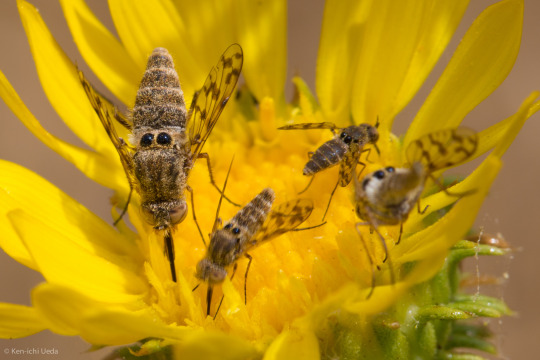


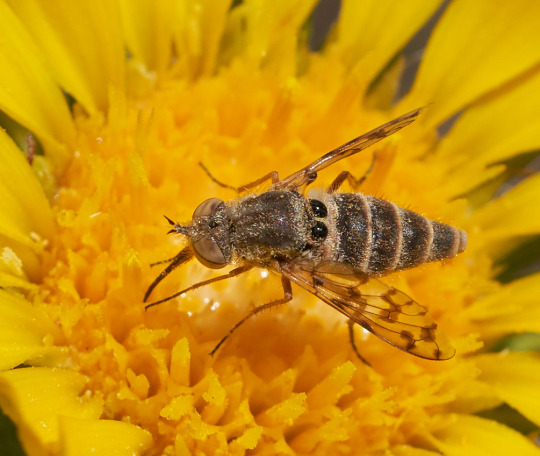
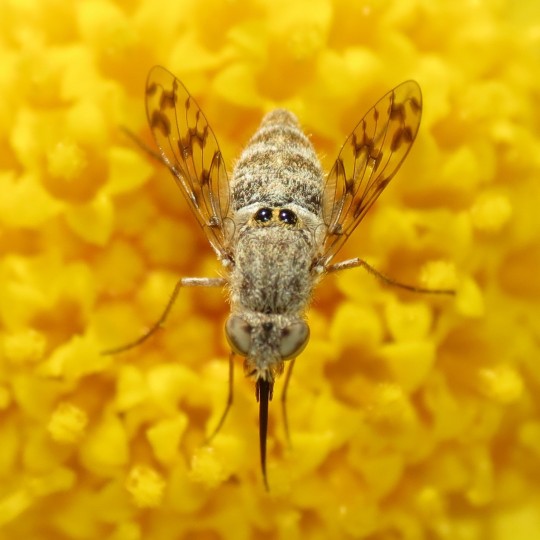
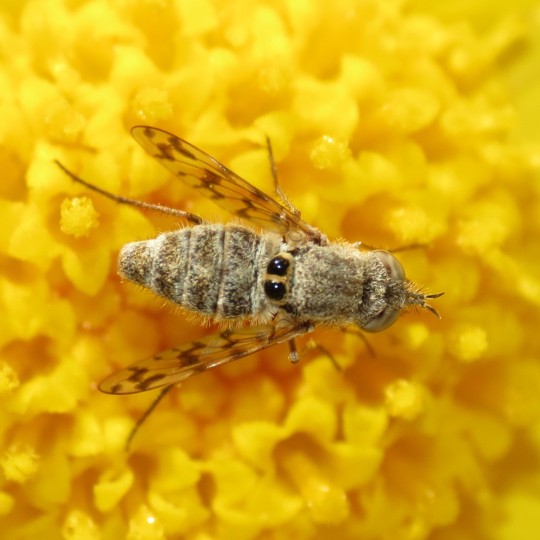
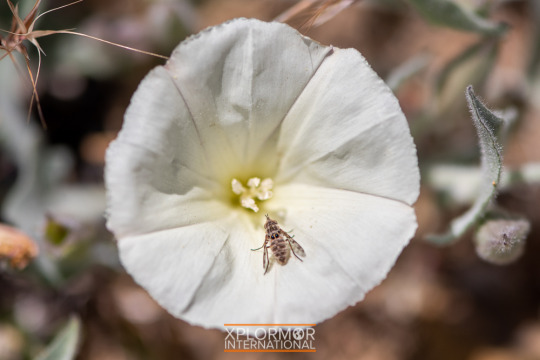

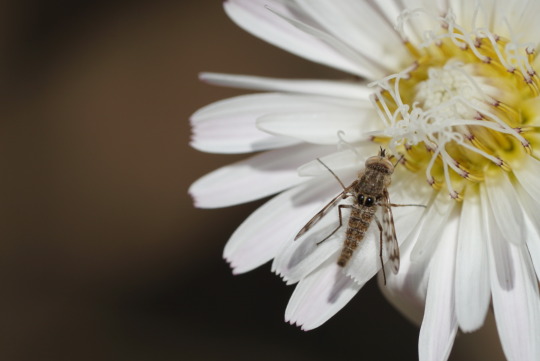
Jumping spider mimic bee fly, Geminaria canalis, Bombyliidae
Found in the American southwest, this species of bee fly is thought to mimic a jumping spider to deter predation. The false eyes are a modified scutellum (part of the thorax) and not real, functional eyes.
Photos 1-4 by kueda, 5 by tiwane, 6-7 by psyllidhipster, 8-9 by bryanjbd, and 10 by janepannor
5K notes
·
View notes
Text
Eulimnadia astraova clam shrimp and eggs. The species name literally means "star egg". So far they are known only from scattered parts of Louisiana and Florida in USA.

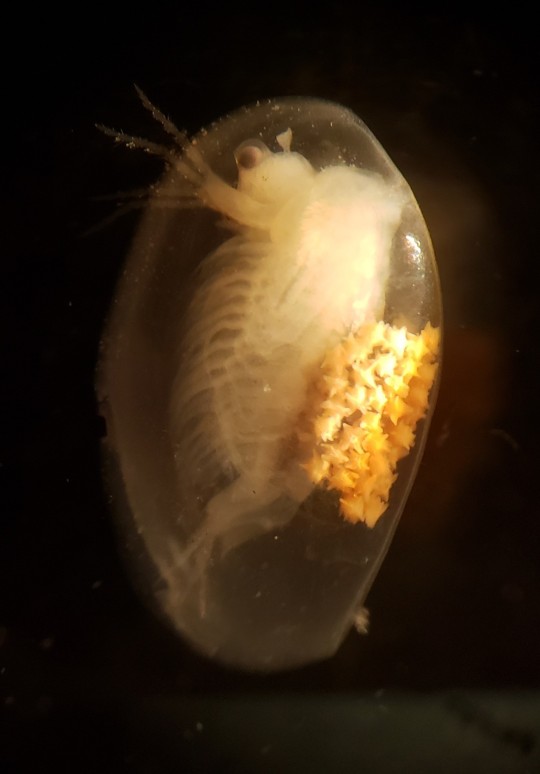
4K notes
·
View notes
Text
just one more graduate degree bro. i promise bro just one more graduate degree bro and it'll fix everything bro. bro. just one more degree bro. please just one more. one more graduate degree and we can fix this whole problem bro. bro cmon just get one more graduate degree bro i promise bro. bro bro please you jsut need one more degree
6K notes
·
View notes
Text
Appall and scorn ripped through scientists' social media networks Thursday as several egregiously bad AI-generated figures circulated from a peer-reviewed article recently published in a reputable journal. Those figures—which the authors acknowledge in the article's text were made by Midjourney—are all uninterpretable. They contain gibberish text and, most strikingly, one includes an image of a rat with grotesquely large and bizarre genitals, as well as a text label of "dck."
On Thursday, the publisher of the review article, Frontiers, posted an "expression of concern," noting that it is aware of concerns regarding the published piece. "An investigation is currently being conducted and this notice will be updated accordingly after the investigation concludes," the publisher wrote.
The article in question is titled "Cellular functions of spermatogonial stem cells in relation to JAK/STAT signaling pathway," which was authored by three researchers in China, including the corresponding author Dingjun Hao of Xi’an Honghui Hospital. It was published online Tuesday in the journal Frontiers in Cell and Developmental Biology.

lmao
9K notes
·
View notes
Text
Tiburonia granrojo or the big red jellyfish is a giant (up to 76 cm/30 in in bell diameter) deep-sea jellyfish that is the only known member of its genus and subfamily. It is unique for having a series of thick feeding arms instead of the usual jellyfish tentacles and for being known from only 23 sightings and 1 capture from around the Pacific. My favorite fact about it is that the scientist who discovered it, George Matsumoto, was going to give it "big ugly" as a species name but his wife thought that was mean and convinced him to change it to "granrojo", meaning "big red" in Spanish.
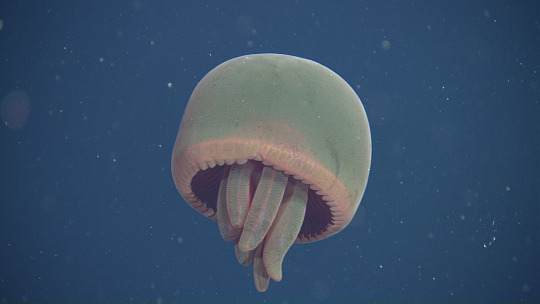
(image id: a large, round, red jellyfish. Instead of the usual stinging tentacles, it possess 6 visible thick arms extending from the bottom of the bell. )
1K notes
·
View notes
Text

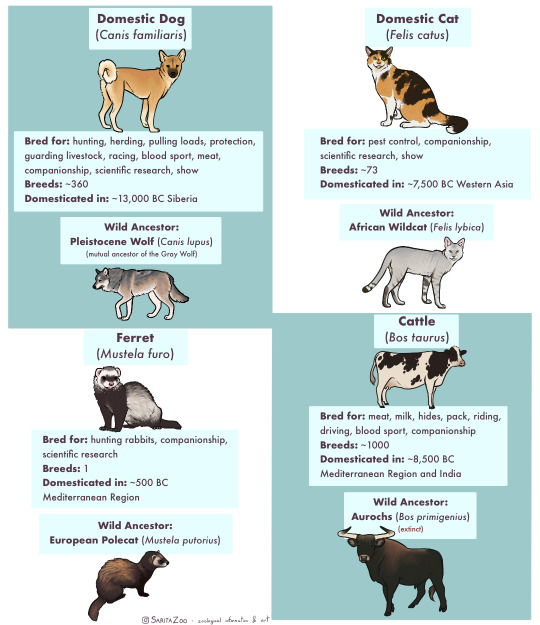


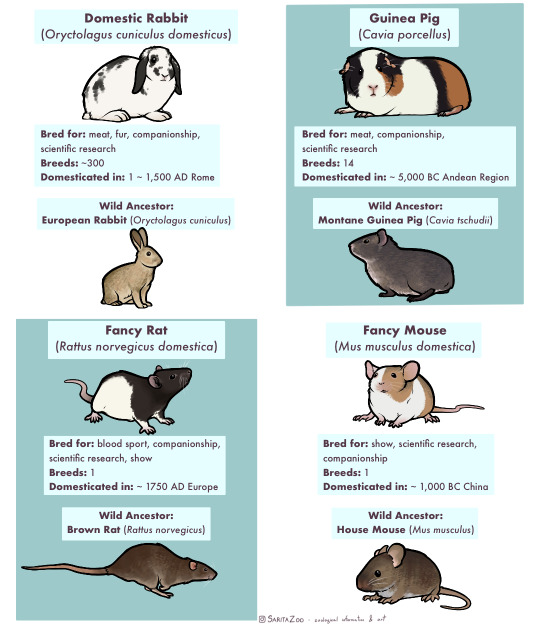
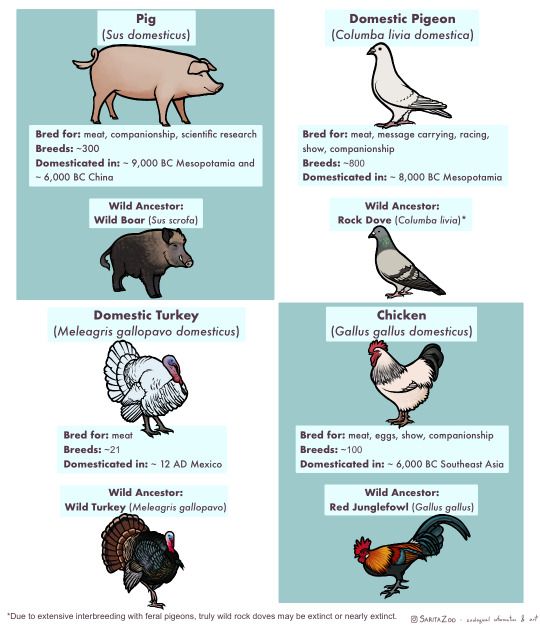
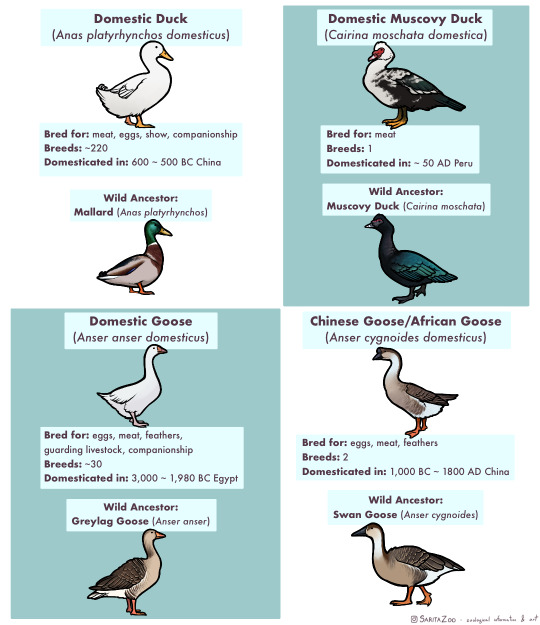
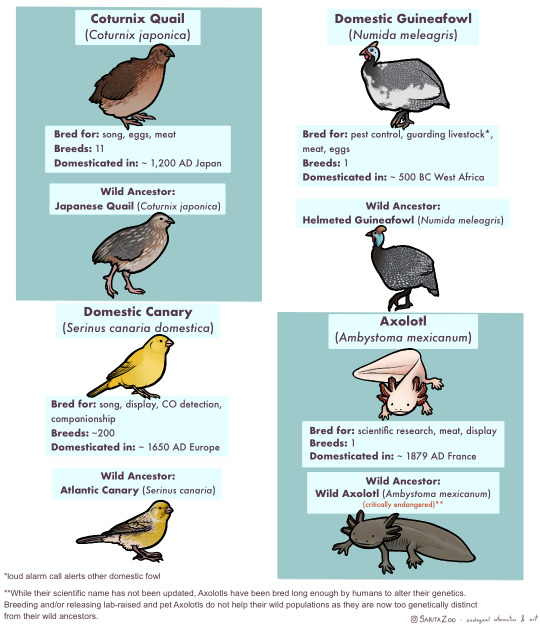


Phew. This one took, uh… a bit longer than expected due to other projects both irl and art-wise, but it’s finally here. The long-awaited domestic animal infographic! Unfortunately, I didn’t have enough space to cover every single domestic animal (I’m so sorry, reindeer and koi, my beloveds) but I tried to include as many of the “major ones” as possible.
I made this chart in response to a lot of the misunderstandings I hear concerning domestic animals, so I hope it’s helpful!
Further information I didn’t have any room to add or expand on:
🐈 “Breed” and “species” are not synonyms! Breeds are specific to domesticated animals. A Bengal Tiger is a species of tiger. A Siamese is a breed of domestic cat.
🐀 Different colors are also not what makes a breed. A breed is determined by having genetics that are unique to that breed. So a “bluenose pitbull” is not a different breed from a “rednose pitbull”, but an American Pitbull Terrier is a different breed from an American Bully! Animals that have been domesticated for longer tend to have more seperate breeds as these differing genetics have had time to develop.
🐕 It takes hundreds of generations for an animal to become domesticated. While the “domesticated fox experiment” had interesting results, there were not enough generations involved for the foxes to become truly domesticated and their differences from wild foxes were more due to epigenetics (heritable traits that do not change the DNA sequence but rather activate or deactivate parts of it; owed to the specific circumstances of its parents’ behavior and environment.)
🐎 Wild animals that are raised in human care are not domesticated, but they can be considered “tamed.” This means that they still have all their wild instincts, but are less inclined to attack or be frightened of humans. A wild animal that lives in the wild but near human settlements and is less afraid of humans is considered “habituated.” Tamed and habituated animals are not any less dangerous than wild animals, and should still be treated with the same respect. Foxes, otters, raccoons, servals, caracals, bush babies, opossums, owls, monkeys, alligators, and other wild animals can be tamed or habituated, but they have not undergone hundreds of generations of domestication, so they are not domesticated animals.
🐄 Also, as seen above, these animals have all been domesticated for a reason, be it food, transport, pest control, or otherwise, at a time when less practical options existed. There is no benefit to domesticating other species in the modern day, so if you’ve got a hankering for keeping a wild animal as a pet, instead try to find the domestic equivalent of that wild animal! There are several dog breeds that look and behave like wolves or foxes, pigeons and chickens can make great pet birds and have hundreds of colorful fancy breeds, rats can be just as intelligent and social as a small monkey (and less expensive and dangerous to boot,) and ferrets are pretty darn close to minks and otters! There’s no need to keep a wolf in a house when our ancestors have already spent 20,000+ years to make them house-compatible.
🐖 This was stated in the infographic, but I feel like I must again reiterate that domestic animals do not belong in the wild, and often become invasive when feral. Their genetics have been specifically altered in such a way that they depend on humans for optimal health. We are their habitat. This is why you only really see feral pigeons in cities, and feral cats around settlements. They are specifically adapted to live with humans, so they stay even when unwanted. However, this does not mean they should live in a way that doesn’t put their health and comfort as a top priority! If we are their world, it is our duty to make it as good as possible. Please research any pet you get before bringing them home!
31K notes
·
View notes
Photo
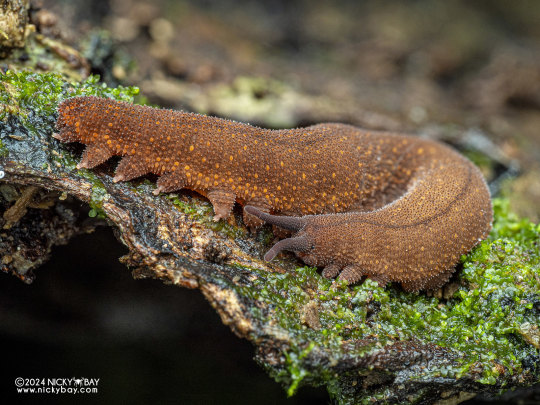

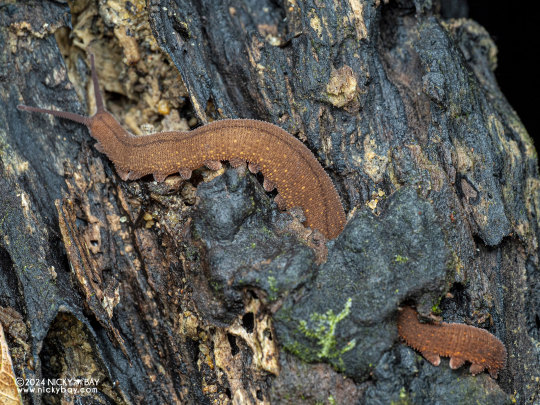


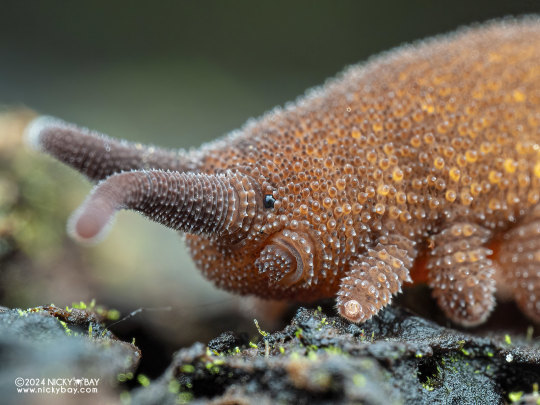

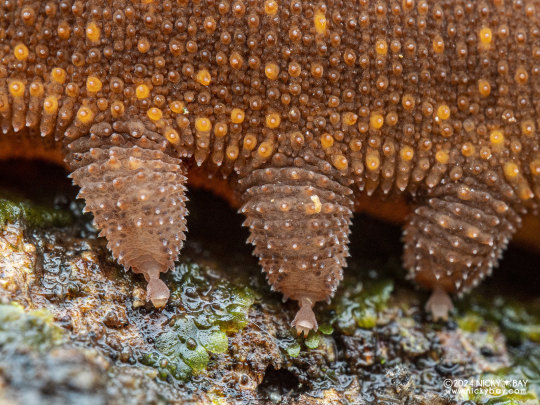
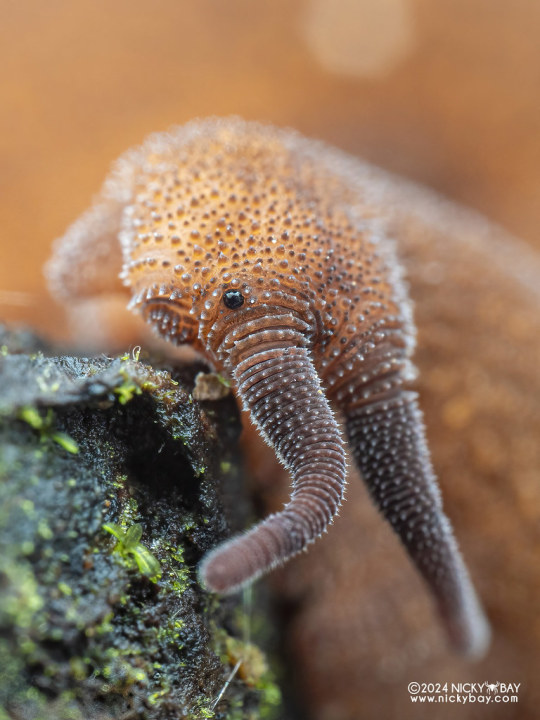

Velvet worm, Eoperipatus sp., Peripatidae
Photographed in Singapore by Nicky Bay // Website // Facebook
Shared with permission; do not remove credit or re-post!
4K notes
·
View notes
Text
one of the most impressive animals I met this year was a huge platyrhacid millipede, found chugging through some bamboo leaf litter in Malaysia.
he was a pleasant weight to hold in the hand, but spread out over so many gentle, graceful legs. the video offers a nice look at his eyeless face—all polydesmidan millipedes lack eyes.

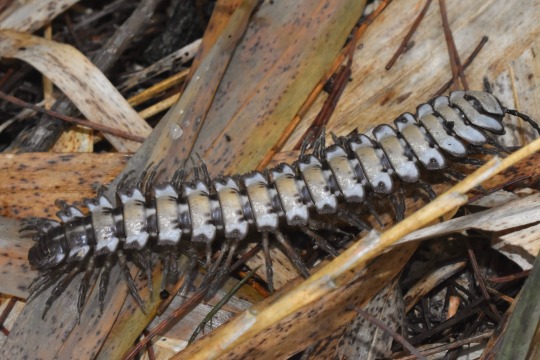
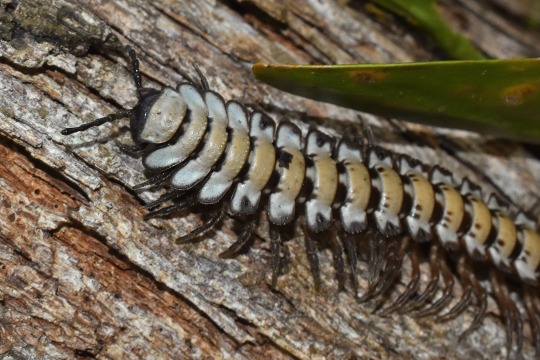

I only hung onto this animated spinal cord for about thirty seconds before setting him back in the leaves, but I recall this encounter so vividly. a truly memorable creature
15K notes
·
View notes
